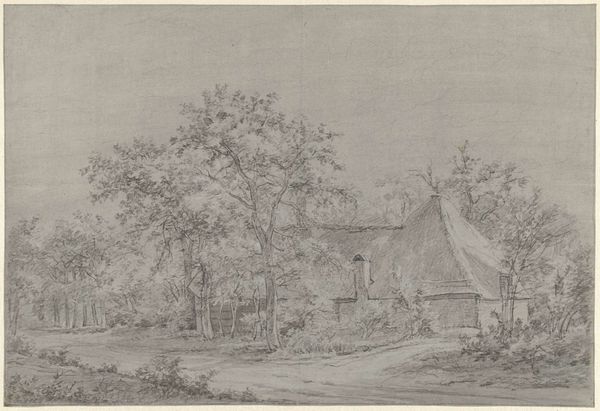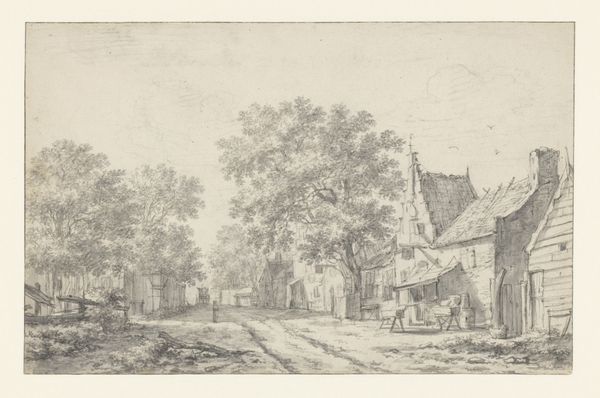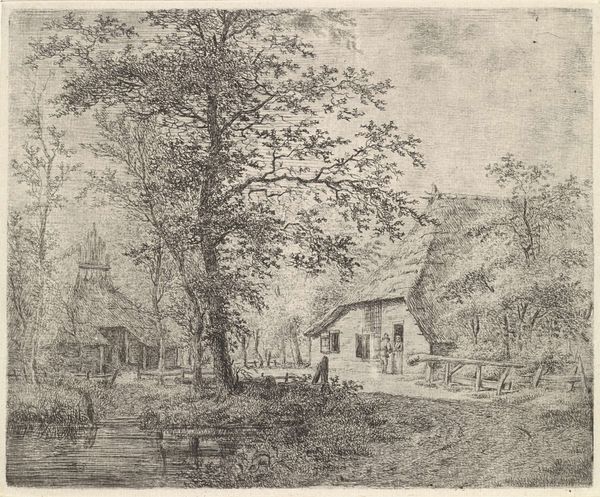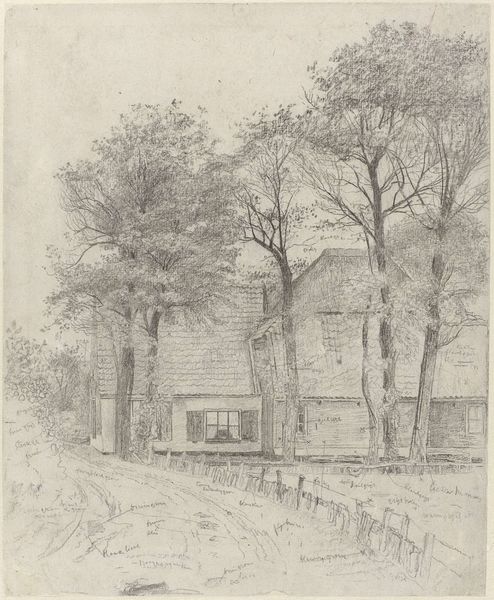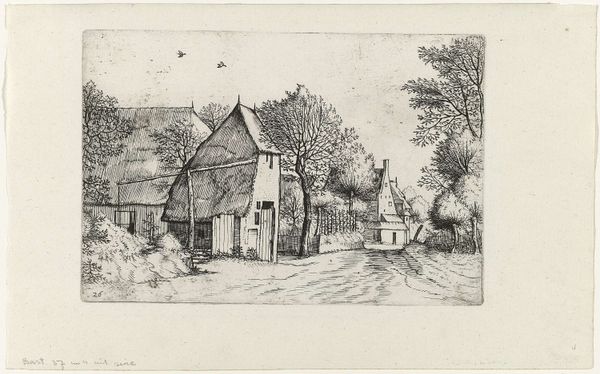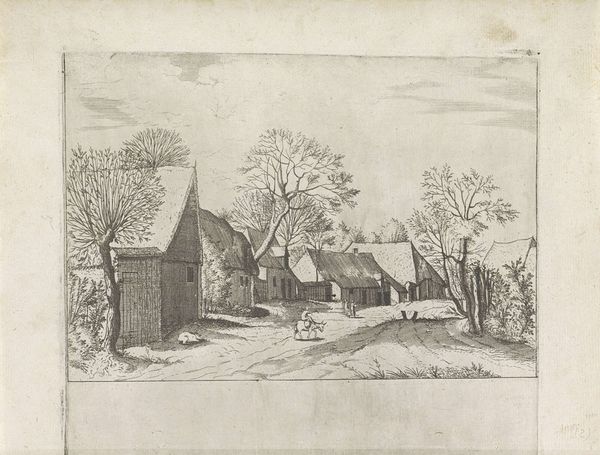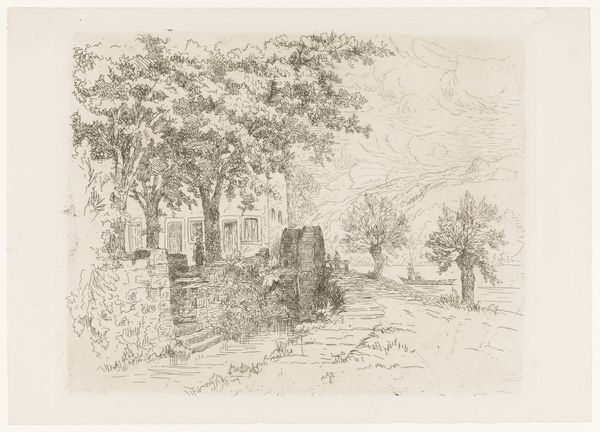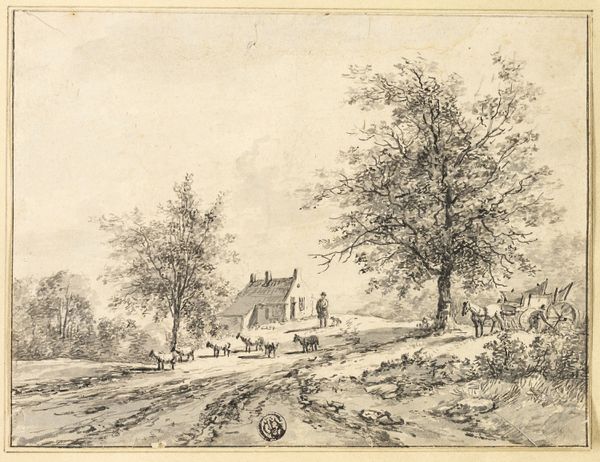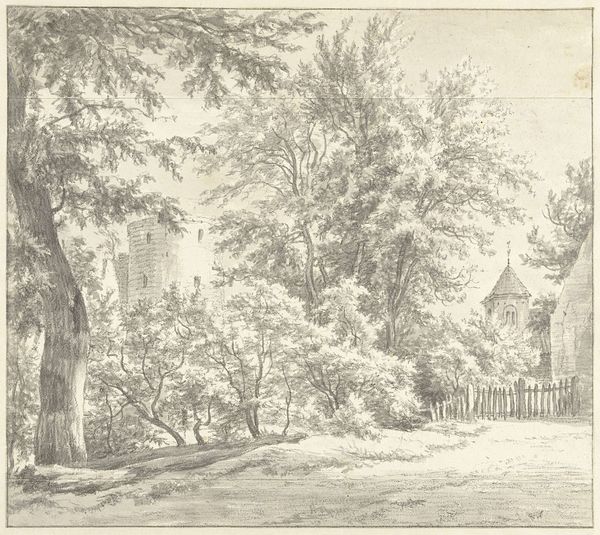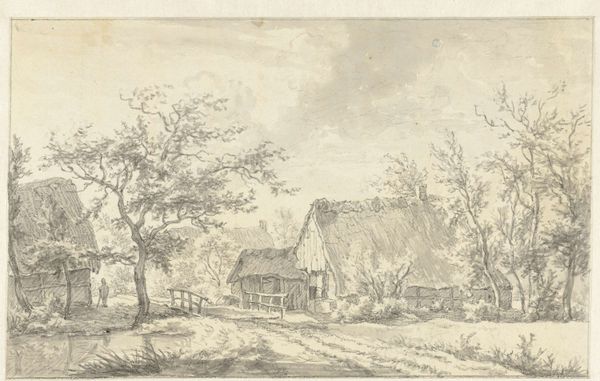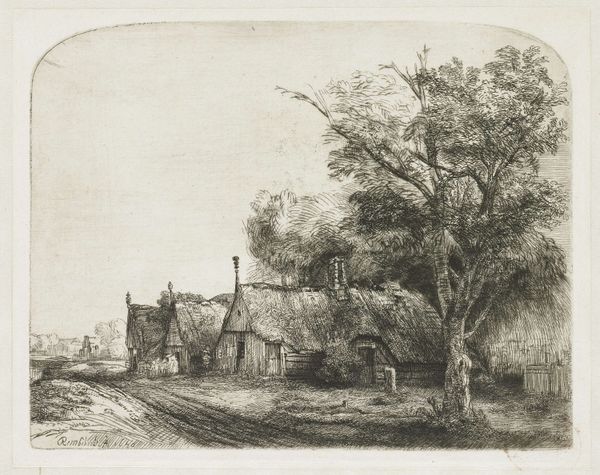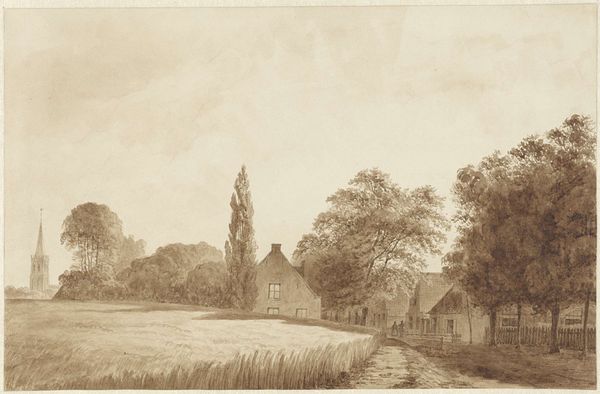
Herfstgezicht met aan weerszijden van een weg boerenwoningen 1788 - 1835
0:00
0:00
drawing, pencil
#
drawing
#
landscape
#
pencil
#
realism
Dimensions: height 207 mm, width 257 mm
Copyright: Rijks Museum: Open Domain
Editor: So, this drawing is called "Herfstgezicht met aan weerszijden van een weg boerenwoningen," or "Autumn View with Farmhouses on Either Side of a Road," and it's by François Joseph (II) Pfeiffer, dating from around 1788-1835. It's made with pencil, giving it a very delicate, almost melancholic feel. What do you see in it? Curator: Immediately, I’m drawn to the depiction of labor and land ownership. The material reality is this: the artist, the pencil, the paper, but also the people who lived and worked on this land. How does Pfeiffer’s technique of almost casual sketching inform how land is possessed, viewed, even consumed by those able to depict it? Is this meant for sale to urban audiences removed from agricultural work? Editor: That's a perspective I hadn’t considered. I was just thinking about the aesthetic appeal of the landscape, but now that you mention it, there's a distance. The laborers appear almost as simple shapes themselves! Curator: Exactly. The “simplicity” itself is constructed. The choice of pencil makes it reproducible. It isn't about accurately portraying, say, one individual farm. The sketch functions as a commodified image of the idealized rural worker for sale. Do you notice any repetition in the landscape's components? Editor: I do. He's sketched similar cottages, trees... like they're almost modules. Curator: Right. It challenges notions of artistic "originality" and genius when we recognize how images of rural life become depersonalized objects of consumption themselves. It makes me question the boundary between the artist’s hand and larger social forces. Editor: So it's not just a landscape, it’s also about the act of representing and consuming that landscape. That's really shifted how I see the drawing. Thank you! Curator: Absolutely. These drawings help us consider how the very act of representing a place can turn that place into a product, and that is something we are still contending with today.
Comments
No comments
Be the first to comment and join the conversation on the ultimate creative platform.
